about the writer
David Maddox
David loves urban spaces and nature. He loves creativity and collaboration. He loves theatre and music. In his life and work he has practiced in all of these as, in various moments, a scientist, a climate change researcher, a land steward, an ecological practitioner, composer, a playwright, a musician, an actor, and a theatre director. David’s dad told him once that he needed a back up plan, something to “fall back on”. So he bought a tuba.
Introduction
Abundant evidence attests to the key importance of green infrastructure in protection from and resilience to disturbance events—hurricanes, floods, tornadoes, wildfire, and other disasters. Now, there is growing focus on the periods between disturbance events: the time of recovery from the last disturbance that grades into preparation for the next. There is likewise a growing appreciation for the role communities play. Natural resource stewardship activities, including tree planting and other community greening efforts, can help restore nature, facilitate healing, and revitalize neighborhoods. While the immediate aftermath of an event necessitates a focus on swift response and mitigation, mid- to long-term recovery efforts offer an opportunity to adapt, learn, and cultivate community resilience.
This is the focus of the current roundtable: what can we do to better support—or in some cases, start supporting—communities as they recover and build resilience through engaging with nature? The recommendations might include the kinds of things we are not currently doing, but should. And they might also be the things we are already doing, but should do more of. What is the way forward for building community resilience with programs in green infrastructure and nature-based solutions?
This roundtable is an outgrowth of a workshop held in 2016, convened by the U.S. Forest Service and supported by TKF and others.
about the writer
Heather McMillen
Heather McMillen is the Urban & Community Forester with the Hawaiʻi Department of Land & Natural Resources. She is also an affiliate faculty member of the Department of Natural Resources and Environmental Management at the University of Hawaiʻi at Mānoa.
Heather McMillen
Tending our gardens or testing our gardens?
Some of the most resilient communities I know are in places with little infrastructure. This struck me when I read about the City Resilience Index (a project supported by the Rockefeller Foundation), which highlighted how the utility systems and services in Arusha, Tanzania are unable to keep up with population growth, leaving water, sanitation, electricity, and other services challenged. Having spent some time in Arusha, I had a different perspective.
What would the world look like if we worked to solve problems by acknowledging local adaptations as social innovations?
I had observed the water and power going out and staying out for extended periods. I also observed that people seemed unfazed by this. They had reserves of water and fuel and were prepared with buckets, kerosene lanterns, and charcoal. They were familiar enough with their natural environments, despite being in a city, that they also knew how and where to find alternative sources of water and fuel. They had close connections to their neighbors and family members who functioned as support networks and shared and pooled resources. I thought about what happens when the water or power goes out in a city with remarkable infrastructure, such as New York, and how much more disruptive it is to daily life. Indeed, resilience is about more than infrastructure. It’s about relationships. What would the world look like if we worked to solve problems by acknowledging local adaptations as social innovations and/or part of existing and important social cultural norms? When we think about strengthening urban resilience, how can we recognize and build upon the flexible, innovative adaptations that many people live by?
Community-based environmental stewardship is an avenue for strengthening resilience because of its power to strengthen peoples’ relationships to place and to each other. An underlying hypothesis for my work is: strong relationships among people and place can promote community resilience because the feedback loops in tightly coupled systems are more effective at recognizing and responding to change. To strengthen community resilience through environmental stewardship, I believe it is important to:
Keep feedback loops and linkages in mind
These connections can be surprising. Liu and coauthors described the connections between the divorce rate in China and the degradation of panda habitat. My colleagues and I have written about how the experience of 9/11 affected and enhanced some communities’ ability to respond to Superstorm Sandy. Thinking outside the box, beyond the boundaries of the site and the community at hand, is critical. With a broad view, we have seen how the processes of creating and maintaining living memorials and community gardens helped stewards develop new or strengthen existing relationships at both the interpersonal level and the organizational level (McMillen et al. 2016). These become resources that are engaged in times of need.
Learn together
We need to broaden who we share experiences, insights, and lessons with about stewardship. We need to be open to other ways of knowing. This includes exchanges that are urban-rural, temperate-tropical, north-south. We also need to get better at listening to and learning from place (not just from people). This means being attuned to one’s environment, aware of its normal cycles and rhythms, and receptive to changes in those patterns. Learning together also means more cross-agency collaboration, including those that have not historically focused on greening or stewardship (e.g., FEMA). One local resident deeply involved in stewardship and disaster recovery suggested to me that FEMA recovery kits include planting materials and tools for communities so they can more quickly begin the work of re-greening together.
Engage the spirit
Although spirituality is typically left out of public discussions of environmental stewardship, for many people, these are inseparable. Spirituality is an important issue for resource managers and first responders because it can promote community resilience to cope with disasters and disturbances (Gómez-Baggethun et al. 2012; Berkes & Ross 2013). What if we more directly engaged or at least acknowledged the spiritual dimensions of environmental stewardship? Some of us are working toward this. In NYC, my colleagues and I described the material and verbal expressions of park visitors that demonstrated the value of urban green space for psycho-social-spiritual wellbeing (Svendsen et al. In Press). We have also documented how stewards of living memorial sites describe the therapeutic value of environmental stewardship. One woman reported “feeling good” through weeding, watering, and engaging in horticulture as a therapeutic outlet. Another steward referred to the sacred nature of the collaborative tree planting following 9/11, saying, “we were grieving. . . all of us felt like we needed to do something . . . Digging by hand was a manifestation of some kind of spirituality”. A better understanding of the sacred relationships with nature as a foundation for sustainable resource management and response to disturbance has great potential for strengthening stewardship specifically and resilience more broadly.
While communities I have worked with see the hypothesis I introduced above as an accepted truth, some of my colleagues question it because it has not been tested with an experimental research design. Is it enough to accept these other ways of knowing and proceed with a “no regrets” or “precautionary principle” approach that fully supports community-based environmental stewardship even if we have not rejected the null hypothesis that it does not support resilience? Or must this be proven in order to get the support of large agencies, institutions, and municipalities? If so, what would such a study look like? Would it be worth doing? Or shall we simply, in the words of Candide, “take care of our garden”?
about the writer
Hita Unnikrishnan
Dr. Hita Unnikrishnan is an Assistant Professor at The Institute for Global Sustainable Development, The University of Warwick. Hita’s research interests lie in the interface of urban ecology, systems thinking, resilience, urban environmental history, public health discourses, and urban political ecology as it relates to the evolution, governance, and management of common pool resources in cities of the global south.
Hita Unnikrishnan
Urban planning and urban commons
As I am penning this piece, the population of the metropolitan south Indian city of Bengaluru, where I come from, is rather divided in their opinions on a burning question: whether a proposed steel flyover—supposedly to be built to global standards in a globalized city—is really that crucial to Bengaluru’s image. The flyover connecting some nodal regions of Bengaluru is to be built by sacrificing more than 800 old, often-irreplaceable trees.
Community-managed structures, whether conceived with resilience as a goal or not, are integral to building a city’s adaptability.
This is not a new phenomenon, however. Infrastructural projects have historically been undertaken at the cost of damaging the fragile urban ecosystem, often with little thought to how both humans and animals may be drawing benefits from what is scheduled to be sacrificed. Grandiose promises of replacing the lost ecosystem, frequently at other, more distant locations, are made (the plan for the proposed steel flyover claims it will replace the more than 800 trees estimated to be lost with over 60,000 ornamentals), but these rarely come to fruition in a city starved for space. Other such examples of urban planning include the colonially pervasive fascination with bourgeois notions of aesthetics and recreation over more utilitarian uses of lakes and similar water bodies, modern privatization of those very lakes, and the chopping of old, valuable trees for projects such as the widening of roads. All of these activities share the hallmark of being non-inclusive and are potentially worrying in a city ill prepared to deal with adversity. For instance, Bengaluru today relies on water pumped from the river Cauvery, over 100 kilometres away, greatly reducing its water security. There exists an implicit notion that decision-makers know what is best for the city, as opposed to citizens who live and make a living out of the very resources that are being ill managed or sacrificed.
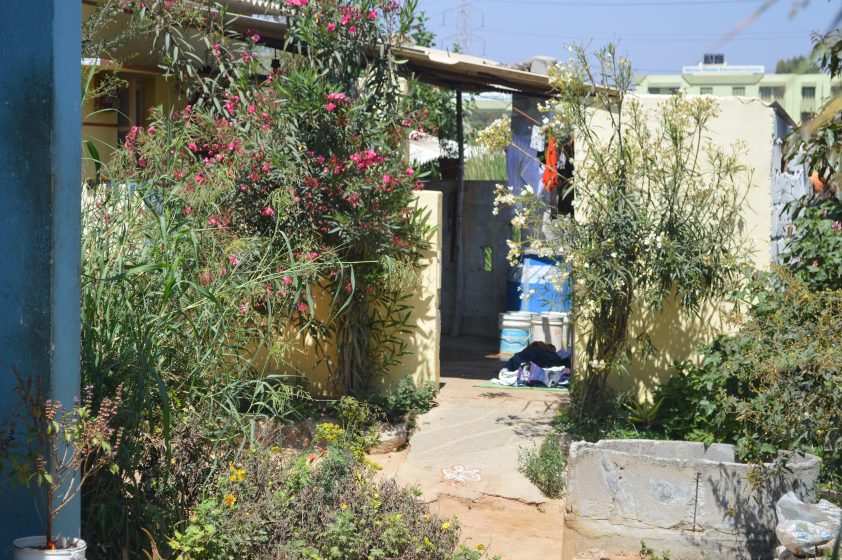
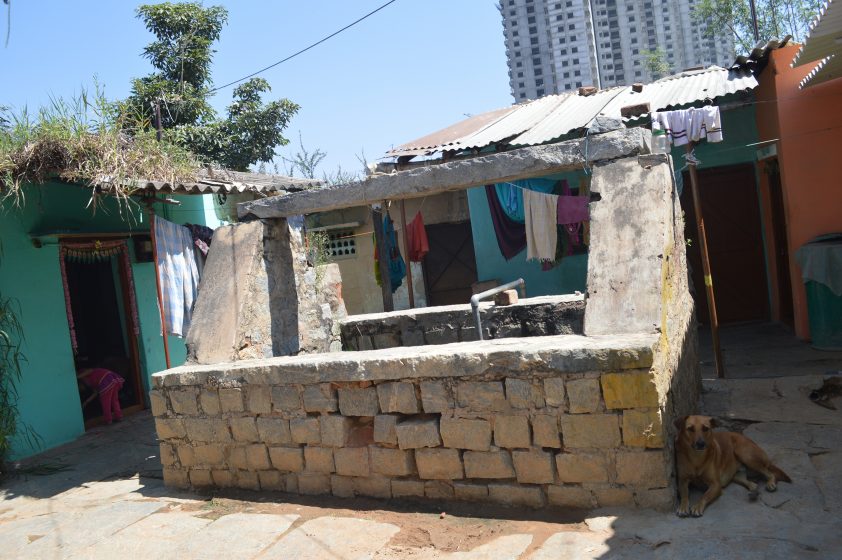
Yet, if one were to be a flaneur walking rather aimlessly, observing what the streets of the city—both the old as well as the new—have to offer by way of visual experience, it is not hard to spot examples of communities nurturing and caring for nature in their own ways. While not on such large scales as the proposed infrastructural advancements, these relics of engagement with nature can nevertheless make one realize the immense potential of community-led stewardship in enhancing resilience of the city. For example, in walking through some of the more densely populated slums in Bengaluru, one would be hard-pressed to find a single home devoid of greenery in the form of medicinal or ornamental trees and shrubs, as well as those holding cultural significance. For many of these marginalized residents, these plants provide a first step towards treating minor ailments such as cuts and burns as well as for serious illness.
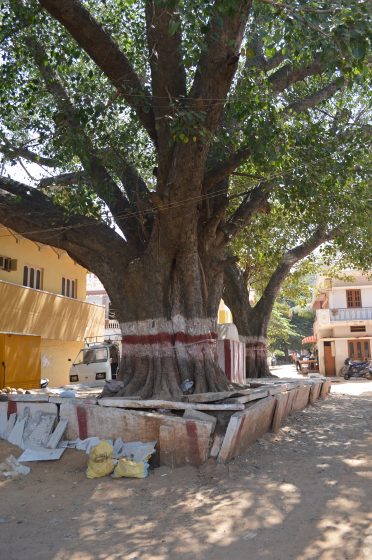
Remains of old, magnificent, formerly community-managed wells that, in some cases, still provide water to nearby localities, attest to the former success of these structures in enhancing the water security of the city. As our research has shown, the heart of Bengaluru once boasted over 1,500 wells, which have sadly dwindled down to about 49 (as of 2014) because of the pressures of urbanization and development. Remnants of urban commons such as village forests as well as communal grazing lands also provide a much needed green oasis in the concrete dominated city. Once managed by communities, with informal rules and regulations governing their access and use, they are integral to providing both utilitarian benefits to people as well as in sustaining local biodiversity and microclimates. In other words, community-managed structures such as these, though not conceived with the direct intention of enhancing urban resilience, nevertheless are integral to building the city’s adaptability.
Still, despite their critical roles, such spaces remain largely ignored by developmental processes, and far removed from the consciousness of larger urban populations. Thus, change must be brought about by factoring in the role of such urban commons in enhancing the strength and capacity of the city to withstand adverse changes—both at the level of urban populations as well as in larger processes of urban planning.
about the writer
Jonathan Halfon
Jonathan Halfon is a Community Planning and Capacity Building Coordinator based at FEMA Region 2 in New York City, where he has focused on integrating nature-based systems and Smart Growth concepts into local long-term recovery and resilience planning.
Jonathan Halfon
To invest in resilience, capitalize on locals
In the 1960s, United States President Johnson used the idea of the Great Society as the basis for a set of ambitious federal initiatives aimed at rebuilding urban centers, protecting natural resources, and reforming education. Like many movements, the Great Society employed a simple idea to drive forward a host of corollary activities. The country’s material progress, impressive infrastructure achievements, economic prosperity, and scientific advancement were not goals unto themselves, but rather a reflection of the many ways a progressive society can lead to advancement for all.
In the face of unprecedented challenges such as climate change and sea level rise, we need to transition back to an empowerment model focused on finding local, creative solutions.
The Great Society Johnson envisioned empowered everyday citizens to make a difference. The federal programs associated with the Great Society hinged on the idea that local progress would come, not through Washington pushing out one-size-fits-all solutions, but from a creative federalism that relied on cooperation between the federal government and local leaders. Many of the programs developed were designed to empower local leaders to take more ownership in their communities, and in doing so build local capacity to find creative, place-based solutions to the challenges of the day.
For much of the latter half of the 20th century, public policy shifted away from this model in favor of a more hands-off approach to local issues. The time is right to transition back to this local empowerment model of the Great Society. In the face of unprecedented challenges such as climate change and sea level rise, finding homegrown creative solutions and investing in local leaders is more imperative than ever.
Resilience should not be seen as a static, singular goal. Just as the Great Society fostered a broad array of policy ideals, community resilience cannot be achieved by focusing only on the built environment. To truly build resilience at the local level, we need to broaden the definition to include the many interdependencies between social and natural systems and the built environment. The dynamic nature of these systems make them inherently unstable. We cannot set up rigid structures to manage them, and certainly not in a post-disaster environment where many systemic inputs have been rearranged by new, outside forces.
Because of their disruptive nature, disasters generate a tremendous opportunity for creativity. Nonprofits step into the breach. Private interests reach out to new partners. New ideas take hold in communities and unexpected leaders find a voice. We need to build structures, locally and nationally, that are always adapting and incorporating the needs of the whole community and that are able to harness post-disaster opportunities to improve upon the status quo.
To that end, the National Disaster Recovery Framework (one of five National Planning Frameworks established by President Obama to achieve a more resilient nation) was developed. The NDRF was deployed for the first time on a large scale after Hurricane Sandy in 2012. The NDRF creates a coordination structure for the federal government that is in effect at all times with the express goal of empowering communities, accelerating the local recovery process and helping communities better prepare. Among other things, the NDRF can bridge the divide that often exists between local government and federal agencies, escalate community recovery concerns and help deliver resources that are not traditionally thought of as part of recovery, including funding work related to green infrastructure and the incorporation of nature-based solutions.
Too often, the protection of natural resources, the consideration of open public spaces and the inclusion of green infrastructure are seen as secondary considerations (or in some cases as oppositional) to traditional disaster response and recovery activities. The NDRF offers a valuable mechanism to provide federal resources and tools that encourage the incorporation of nature-based solutions into disaster recovery planning at the local level. Local communities can outline the role that natural systems and spaces play in the larger fabric of their community before a disaster strikes by including provisions that account for their protection in a local pre-disaster recovery ordinance. This is one of the most effective ways communities can avoid adverse impacts to natural resources and preserve open space after a disaster. More robust community involvement in the development of local hazard mitigation plans, the identification of co-beneficial projects and the integration of these plans into other local, non-recovery and resilience efforts can also help.
Traditional infrastructure (sea walls, etc.) is often seen as the principal driver of local recovery and of recovery success. By rethinking what we gain from our natural and social systems, we can start to reform recovery. If we consider things such as the eco-systems services co-benefits a modified recovery project could have, rather than only planning to put right what was damaged, we are on the path to smarter recovery. Another small change that can lead to improvements involves finding new ways to organize and incorporate existing local stewardship and advocacy groups into the recovery process. Connecting such stakeholders to national organizations with resources will further augment recovery gains.
Community resilience all starts with the insistence at the local level that including social and natural projects and programs is important to the long-term health and sustainability of a community before a disaster strikes. Doing this can open up funding opportunities not traditionally associated with disaster recovery. By broadening our definition of resiliency, adding to the systems we use to deliver aid, and rethinking who can and should be involved in planning for disaster recovery, we will have taken our first steps towards empowering citizens to have a more active role in protecting and enhancing their communities.
about the writer
Paula Villagra
Paula Villagra, PhD, is a Landscape Architect that researches the transactions between people and landscapes in environments affected by natural disturbances.
Paula Villagra
Resilience is also about binding and inclusive planning tools
Urban planners should consider facilitating access to diverse ecosystem services, particularly in coastal areas, which are characterized by a rich diversity of natural resources useful for mitigation, regulation, provisioning, and restoration purposes. However, natural resources outside and within urban areas have been largely overlooked in urban planning and are often unregulated due to the limitations of regulation plans that function only up to the urban edge. Outside such political borders, rural areas lack regulations that can enhance recovery from disturbances.
Land use planning must accommodate specific land use types, such as urban wetlands, to increase community resilience.
This issue has been observed widely in Chile, were I developed studies on this subject and found that there are no statutory planning instruments to regulate land located outside of urban areas. This is especially problematic for enhancing coastal resilience, since many relevant natural resources are often located adjacent to coastal settlements but outside urban boundaries. For example, wetlands and dunes that act as flood buffers; forest and prairies that can provide food resources; and nearby hills that give refuge and security typically exist outside urban areas and within natural environments that cannot be regulated in a binding way.
We have also found that natural resources within urban environments have a restorative potential that is crucial for recovery in disaster-prone environments. For example, urban wetlands, including water presence, open space, and landscape design interventions, can be restorative to people subjected to a high level of stress after disaster. Hence, access to natural restorative environments may be crucial in cities prone to earthquakes and tsunamis, since catastrophic events can change one’s relationship to the landscape, with important implications for health and well-being. However, urban pressures often threaten the conservation of nature within urban areas. The need to build new highways and to increase housing provisions, and changes in land use that promote urban density, deteriorate urban nature as well as people’s relationship with it. This occurs due to the lack of regulations that specifically consider, for example, urban wetlands as a specific land use within urban planning. In the case of Chile, urban wetlands fall within the category of green areas, and thus lack the adequate regulation both for their conservation and for their use in recovery after a disaster.
Natural resources that provide buffers, food, water, refuge, security, and restoration after a disaster, within and outside of urban areas, need to be urgently acknowledged, considered, and protected through statutory urban planning documents at regional and local scales to improve community resilience after disturbances.
about the writer
Renae Reynolds
Renae Reynolds is a Project Coordinator at the US Forest Service Urban Field Station in New York.
Renae Reynolds
Socially resilient people = resilient systems and cities
Drawing on the experience of the past year and 4 months, as a coordinator of a research project titled the Landscapes of Resilience, I begin my answer to this question by reflecting on what my notion of resilience was at the start of the position and how my understanding changed over time. The vision of resilience I began with was, indeed, one that encompassed physical infrastructural change. Thinking about the physical devastation to people and property in previous natural disturbance events such as Hurricane Sandy and Katrina quite reasonably led to an internal reaction that would call for the elevation of structures, a fortifying of systems; indeed, I could easily conjure up imaginative and innovative ways that cities could become resilient to future disturbance.
Levees break and barriers fail, yet what endures is the will and persistence of people.
However, that image was very quickly tempered by the reality and challenges associated with achieving such enormous transformations to our built environment here in the U.S., as well as globally—the current state of our infrastructure can attest to how tremendously difficult such changes would be. Two years prior to working on the Landscapes of Resilience, I took a trip to Rotterdam as part of a group of community-based organizations and urban planning students who would explore and engage the ways that Rotterdam—a city built on land reclaimed from the ocean—and its citizens live with water. That trip allowed me to recognize the kinship of Rotterdam to New Orleans; for example, both lie below sea level. Both owe their existence to massive technological inventions: levees in New Orleans, and polders, dikes, surge barriers such as Oosterschelde, and water plazas in Rotterdam. Rotterdam was not short on highly technological solutions to resilience. Yet these two cities have another thing in common; at times, all the technological know-how we can muster cannot withstand the immense power of nature. Levees break and barriers fail, if they ever get built at all. Yet what endures is the will and persistence of people and the social resilience that we must recognize, value, and cultivate in the future.
Understanding the social dimensions of resilience was the main objective in the Landscapes of Resilience initiative. I was not only a member of a research team engaging people who live on the peninsula between Jamaica Bay and the Atlantic Ocean in New York City—as a fellow resident in this vulnerable landscape, I shared a common identity with them. I was not there when Hurricane Sandy hit, but I understand the pinprick of anxiety in the back of the mind when one considers the potential for another storm of its magnitude. This common understanding is what framed my work with the group of gardeners and land stewards that the project engaged. Through close and constant contact, I began to understand the importance not just of the internal motivations one gardener might possess to keep gardening after disaster, but the equal importance of the relationships and social connections a group of gardeners forges among themselves, and how those relationships can be fostered through collective decision-making, how commitment to a common pursuit can develop mutual trust, and how that trust can allow people to go beyond their initially conceived realm of possibility. An intimate understanding and will to invest in and support the social dimensions of resilience is key to supporting readiness, response, and recovery from disturbance.
about the writer
Katerina Elias
Katerina is a Research Analyst at WRI Brasil and is based in São Paulo. She focuses on urban climate resilience and community response.
about the writer
Luciana Nery
Luciana Nery is Deputy Chief Resilience Officer of Rio de Janeiro and wishes to incorporate the lessons learned at the Olympics for the resilience of the city.
Katerina Elias-Trotsmann and Luciana Nery
Communities are both the first to be affected and the first to respond to climate impacts; as such, communities are key agents and multipliers of urban resilience. Community preparedness is a necessary aspect of urban resilience that cities are beginning to prioritize as a solution to bolster climate resilience. Encouraging and enabling a culture of resilience enhances the preparation capacities of citizens and their community as a whole. They are able to maintain core functions during shocks and, most importantly, to rebound and flourish after them.
Rio is trying to support community-based environmental stewardship by assessing community resilience, enhancing response, and accelerating recovery.
As climate change impacts are felt differently according to geography, topology, infrastructure provision and social inequality, effective climate-resilience strategies are therefore place-based, suitable to neighborhood qualities and characteristics. The role of communities is thus essential to successful climate change adaptation and resilience building. To that effect, city plans should aim to enhance citizens’ and community resilience to climate change.
Why should cities invest and encourage a culture of community resilience?
Investing in communities vulnerable to climate change impacts can reduce the damage brought on by extreme weather events and the need for government relief funding, and can mobilize more resources within and into communities. It is estimated that every $1 spent on resilience efforts yields $4 in economic benefits, not including the thousands of prevented injuries and hundreds of saved lives.
The need for urban resilience in Rio de Janeiro became clear in April 2010, when heavy rains hit the city; 66 people died in landslides and thousands were displaced. The storm that hit the city had not been detected by any radar, and even if it had been, it would not have been possible to warn the population and give them instructions for evacuation so late at night. That tragedy prompted the updating of slope-safety maps, the installation of early warning systems in many favelas, frequent drills for disasters, and the creation of the Rio Operations Center, intended to integrate all the crisis management teams.
The city of Rio de Janeiro was chosen to be part of the 100 Resilient Cities initiative in 2013 and released its resilience strategy in 2016. However, engaging communities in environmental stewardship remains a challenge; a lack of understanding of local capacity, existing social tensions within and between communities, and the need to increase community capacity to manage risks are key obstacles to overcome in promoting environmental stewardship.
For a city such as Rio, investing in local community capacity is the first step in encouraging a culture of community-led resilience. Below, we outline three ways the city is trying to support community-based environmental stewardship with the focus on improving local community capacity: assessing community resilience, enhancing response, and accelerating recovery.
Assessing resilience
A key innovation of the Resilience Plan of the City of Rio entails measuring community resilience. The Urban Community Resilience Assessment (or UCRA), developed by the World Resources Institute, helps cities include individual citizen and community capacities into broader assessments of urban resilience. This tool was developed with the input of community leaders, and a pilot trial has already run, with 400 respondents from two favelas in Rio de Janeiro. By assessing social cohesion, familiarity with local risks, warning systems, proximity to ecosystems, and disaster readiness, the UCRA provides a snapshot on preparedness behaviors, risk perception, and strength of community relations. This helps cities rapidly identify public policies and concrete actions that they can take in relation to the specific traits of each community, considering its geography, history, culture, and habits.
Enhancing community relations
The second point concerns governance, trust, and participation between the communities and the local government. Rio has placed strong emphasis on building relationships of trust between the local at-risk communities, the Civil Defence (the disaster risk reduction agency) and the Rio Operations Center. The Civil Defence, for instance, has developed a Resilient Communities program together with the UN’s Office for Disaster Risk Reduction and 22 community groups from 13 favelas. One effective strategy has been organizing and running emergency simulations in local schools, along with a one-year curriculum on crisis preparedness, first-aid, and resilience.
Investing in local capacity
Finally, Rio’s municipal resilience plan extensively emphasizes the need to invest in local community capacity to deal with climate change and local risk management, with year-round measures and the commitment of community leaders.
For example, the city of Rio de Janeiro has been working with over 100 informal communities over two decades to plant trees to reduce the impacts from the urban heat island effect, strong rains, and landslides in a program known as the Reforestation Team Effort (Mutirão de Reflorestamento). To date, more than 4 million trees have been planted, equivalent to an area of 2,500 football fields. The city government works directly with local communities through a remuneration scheme, engaging them in the entire process from cultivating seedlings to planting and managing restored areas. This government-run scheme therefore not only contributes to risk reduction, but enhances livelihoods.
about the writer
Sumetee Gajjar
Sumetee Pahwa Gajjar, PhD, is a Cape-Town based climate change professional who has contributed to scientific knowledge on transformative adaptation, climate justice, urban EbA and nature-based solutions. I currently work at the science-policy-research interface of climate change, biodiversity and vulnerability reduction, in the Global South. My research interests continue to be focused on urban sustainability transitions, through collaborative governance, just innovations and climate technologies.
Sumetee Gajjar
Resilience through caring for nature in times of transition
Resilience is often discussed in terms of recovery from or response to disasters, and of communities which are more vulnerable to the impacts of a range of environmental disasters. However, there are aspects of city living, especially in developing countries, which expose residents across different social groups to ongoing and daily environmental stresses. These may not fall immediately in the category of disasters, but their cumulative impact over a few years can have disastrous impacts on city residents’ health and well-being. Urban floods affect several city wards and garner significant media coverage and political commitments to avoid similar events in the future. City planners and decision-makers’ response to urban floods in India rarely encompasses nature-based solutions. Real estate development continues unabated, drains are cleared and their capacity is increased, and other technical solutions are sought—solutions in which communities have a minor role to play.
The biggest disaster being averted by community initiatives is that of non-engagement with nature by city residents.
At the same time, communities continue to face lower-intensity, chronic risks through consumption of polluted water; water scarcity during drought years; dangerous road conditions; and poor air quality due to vehicular emissions in established parts of a city, and to new construction and open fires in fast urbanizing city peripheries. Given the way in which rapidly transforming cities of the Global South are managed and governed, it is hard, if not impossible, to hold specific institutions accountable, or to expect redressal. In particular, pollution of ground water is of critical concern, as it is linked to practices and behaviours of multiple actors, some of whom benefit from regulatory slippage, while others are unaware of their contribution to poor water quality.
How, then, do we support communities, who embattle city conditions to avert disaster, in building resilience? Resilience is certainly not just about infrastructure. In fact, aspects of resilience such as flexibility, adaptability, safe failure, and learning are to be found in solutions that are, at their best, a combination of infrastructural approaches and sustained human engagement around a matter of public concern. Such initiatives end up creating a sense of place and ownership towards nature in the city, and can be leveraged to approach environmental issues which are otherwise difficult to raise and discuss.
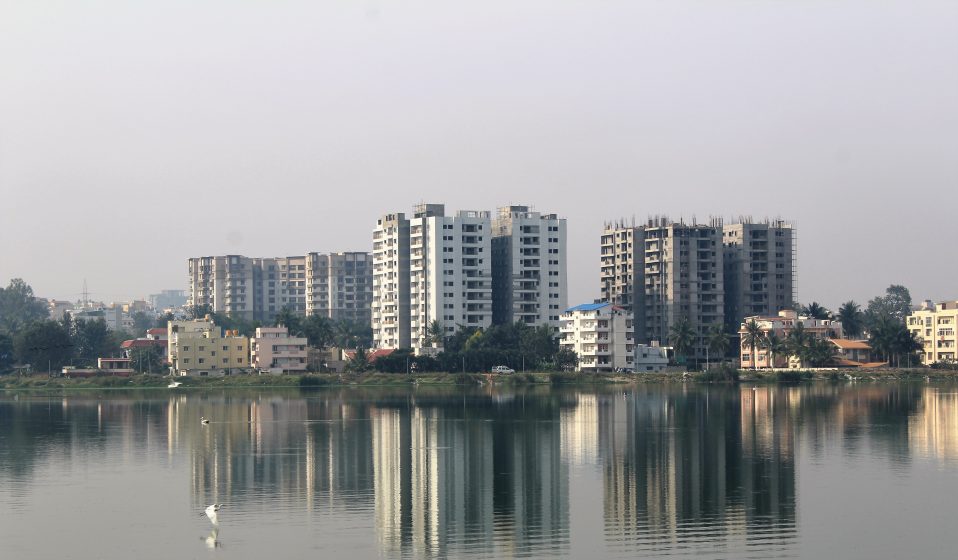
To reflect a bit more on this, I draw upon my experience of being part of Jal Mitra, a volunteer group established to conserve a lake and its surrounds in North Bangalore. Initially called Guardians of the Rachenahalli Lake, this group was convened for the first time on August 1, 2015. The last year has produced multiple lessons on channeling the positive force of citizens’ time and commitment to cope with the stresses of living on the expanding edge of an Indian megacity. A humble endeavour, which thrives on volunteered weekend time, Jal Mitra has grown to more than 100 members and has executed quarterly plantation drives involving school children, cleared alien vegetation, constructed a perambulatory dirt track for joggers and cyclists around the lake, facilitated multiple users of the lake waters, and hosted awareness events on public holidays. Volunteers monitor breaks in the fence, encroachments by builders, instances of waste dumping, and other forms of pollution; they also take it upon themselves to inform relevant government agencies in the event of such activities.
Jal Mitra continually notifies additional residents of local apartment buildings to help grow the circle of awareness. Jal Mitra engages with the private sector to contribute through corporate social responsibility, and with local landlords to build sanitation facilities for residents of informal settlements. The neighbourhood has witnessed major public works, including the laying of high capacity storm water drains, bridge construction, and the resurfacing of roads over a period of two years. During this period of diverted routes over muddy lanes and around dug up ditches, residents were regularly exposed to vehicular congestion and potential accidents, including life-threatening falls. The potential risk of a disaster in these circumstances was a deeply erosive force on collective well-being. In this context, the existence of a community group that is dedicated to sustaining a local natural asset, for no personal gain, is as strong and positive a force as the lack on such a group during infrastructural upheaval.
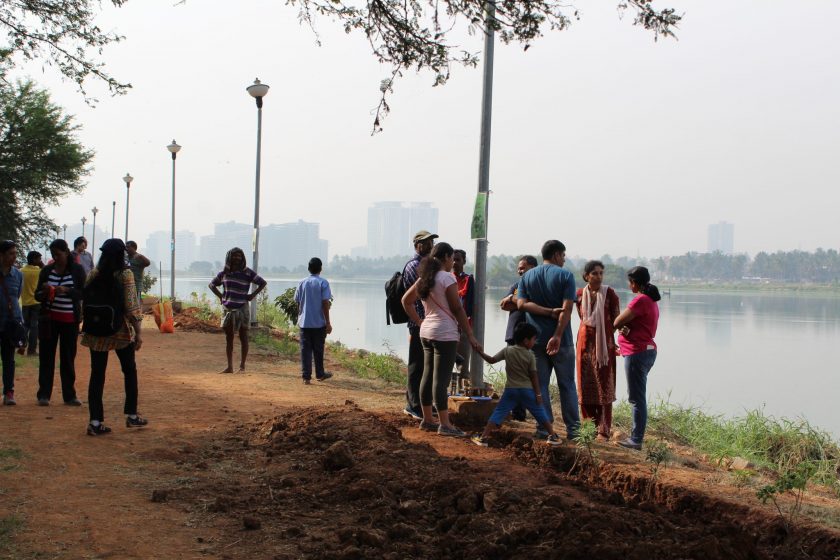
Environmental stewardship at a local scale in Bangalore is rarely able to shift development pathways that continue to isolate lakes from natural streams, or to prevent tree-felling for road expansion. Disturbances to nature are common, and usually irreversible. The biggest disaster being averted by community initiatives is that of non-engagement with nature by city residents. Because when that happens, the remnants of open spaces (green and blue), which are yet being cared for, will finally disappear.
about the writer
Weston Brinkley
Weston is as a policy and research consultant working on the social dimensions of urban natural resources. He currently chairs the City of Seattle’s Urban Forestry Commission and holds adjunct teaching positions at Seattle University, the University of Washington, and Antioch University, Seattle.
Weston Brinkley
Community social networks are the strongest representation of our human systems. However, we too often act as if the manifestation of our societies is our built infrastructure, instead. Treating our cities and towns as a series of physical infrastructure features limits our ability to sustain their core, enduring function as social networks. Resiliency is maintaining and fostering these community and social networks in the face of disturbances.
To help cities perform their core function as social networks, we must support grassroots stewardship, foster true empowerment, and advance equity.
Traditional infrastructure is too discrete to be completely resilient. It is also expensive and insufficiently redundant in the necessary way—namely, to handle disturbance shocks to our systems. Not only are human systems networked, they can help network hard infrastructure, conferring resilience on other systems.
Communities provide the mechanisms for such resiliency. Networked social systems are bolstered by increased diversity, density, and interaction. These drivers maximize the effectiveness which has generated resilient resource mechanisms such as community solar power, tool libraries, and, of course, community gardens. While each of these is a physical feature, the real innovation that sparked their successes was an advancement in social organization and empowerment. These examples of empowering communities to develop their own resilient, networked systems could be realized in countless ways.
This type of social collaborative achievement is perhaps only just beginning. We’ve recently seen dozens of “disruptions” to typical urban functions through new technology, providing services and added capacity using existing infrastructure, such as vehicles and homes. A prime example is the development of neighborhood scaled Buy-nothing Groups. These social networks allow for extremely efficient distribution of goods, and the additional capacity and preference matching facilitated by such social networks could be a critical tool in advancing resilient communities.
Support grassroots stewardship
We know that the most enduring social networks are those that have formed naturally through reinforcement of our existing social structures. The expression of these ingrained social structures are grassroots efforts. The appeal of such efforts includes their reach and depth within communities. Research has shown that environmental efforts are often undertaken out of social desires for community building and personal connection. The ability to connect to the core of community needs and express those needs through community driven action is what sets grassroots efforts apart, and perhaps positions them to be major contributors to environmental resiliency.
It’s important to remember that movements don’t start from government offices, and are rarely generated from within formal organizations of any kind. Fostering environments that not only allow, but encourage and incentivize organic community networks, is critical. Therefore, we must support effective, community-generated networks and social structures before imposing new ones.
Foster true empowerment
For community-level social networks to advance in the face of institutional inertia that perpetuates infrastructure systems, we have to develop a community first approach. We must allow communities to do more. Ongoing development of global advances in urban-based democracy, such as the Right to the City and Participatory Budgeting movements, are prime examples of fostering effective community empowerment. These approaches should have both strong application and new corollaries when it comes to resiliency and disturbance preparedness.
In another example, volunteer environmental stewardship efforts are already massive forces for change in our communities. Forest restoration, trail maintenance, and community garden development are salient examples of resiliency efforts supporting flood protection, access and mobility, and food security in the face of disturbance. Civic tree planting and stewardship has repeatedly been shown to be the most cost effective approach to tackling many water and public health challenges.
Civic or environmental volunteerism is a social network that provides tremendous resiliency to communities. Yet the range of activities we let communities or volunteers engage in is currently limited. Communities should be empowered to do far more than plant a tree or adopt a drain. Our infrastructure, from energy to food to transportation, is ripe for additional community involvement. Beyond involvement in planning decisions, citizen participation should run the spectrum from learning, to doing, to taking ownership. Therefore, we must expand the type of projects and level of participation that communities are allowed to undertake when it comes to community infrastructure and the environment.
Advance equity
Vulnerable and unique communities are the ones shown to be most susceptible to disturbance, and therefore most in need of resiliency solutions. Traditional infrastructure doesn’t respond well to identifying vulnerable populations or prioritizing opportunities for community development. Its inflexibility, even its impartiality, underserve too many communities, while failing to take advantage of new ideas or advancements developing from unique places. However, social networks are ripe for not only being developed within and amongst a wide range of communities—they are necessarily malleable, providing better matches for community needs.
If networked social systems are bolstered by increased diversity, density, and interaction, then a diversity of ideas more easily transferred will strengthen social networks and increase resiliency. Networking new communities into our resiliency and disturbance preparedness conversations is critical to increasing the diversity of solutions and approaches. This not only provides stronger and more effective networks overall, but broadens our opportunities for solutions. For these reasons, investing in community driven social systems first is critical for resilience. Therefore, we must remove gaps in equity by first supporting communities with the greatest resilient growth opportunities.
about the writer
Raul Pacheco-Vega
Dr. Raul Pacheco-Vega is an Assistant Professor of Comparative Public Policy at CIDE in Mexico. Raul’s research is interdisciplinary by nature, lying at the intersection of space, public policy, environment, and society. He is primarily interested in understanding the factors that contribute to (or hinder) cooperation in natural resource governance.
Raul Pacheco-Vega
When I think about resilience, I think of the work of Buzz Holling and Lance Gunderson, who coined the notion of panarchy. This concept borrows heavily from the biological sciences’ literature and offers a framework to think about how we approach external shocks and their impact on living organisms within an ecosystem of interest. According to the panarchy conceptual framework, systems can withstand external shocks by adapting through periods of slow and fast change. Different components of the system have different roles in this adaptive process, and operate at various scales.
We need to think beyond climate policy and create an integrated urban development set of policy tools, programs, and projects that will then build resilience.
Resilient organisms are able to adapt to stressors by learning how to cope and survive. Applying resilience thinking to urban systems, in particular cities, has become one of the most exciting (although perhaps over-used) models of urban governance. Adaptive urban governance seems at times a fad in the literature on cities. Given the realities of climatic change, if cities aren’t able to adapt to global environmental change, they will face the stark reality of droughts, sea level rise, abrupt changes in weather conditions, floods, and others types of disasters. Thus, it is imperative for cities to develop the ability to protect their citizens from these external shocks.
There are several elements to applying resilience thinking to adaptive urban governance. First off, we need to think about intelligent urban design that allows for the creation of buffer zones, robust infrastructure development that can withstand extreme weather events, a population that is well prepared for disasters, as well as mechanisms for timely triggering and deployment of disaster response teams. If a city isn’t properly planned from the start, and has zero information about the degrees and types of vulnerability that it faces, this city will demonstrate very little capacity to adapt, and thus we can’t expect it to be resilient.
Secondly, properly implemented resilience thinking necessitates a long-range, long-term plan not only for disaster response, but for general urban planning. Much of what cities do at the moment when facing extreme climatic events is in response to the emergency at hand, but they tend to continue planning for horizontal urban expansion without sufficiently considering that the more extended and expanded the urban boundaries are, the more challenging it will become for disaster response teams to reach beyond the urban perimeter to the peripheries.
Third, resilient cities can’t solely be driven by climate politics at the domestic and international levels. I’ve often frowned at (and complained about) the notion that climate change is THE single most important and most relevant environmental issue facing our planet. The case of contaminated water in Flint, Michigan (and recent similar cases in Pittsburgh and other cities across the United States) have clearly demonstrated that cities face multiple challenges, and that they need to rethink their approach to urban governance AND solve multiple problems, instead of focusing on adaptive capacity to climatic change. If municipal water utilities are unable to provide safe drinking water for their communities, how able will they be to adapt to climatic change? I believe that in order for resilience thinking to be properly applied to cities, we need to think beyond climate policy and create an integrated urban development set of policy tools, programs, and projects that will then build resilience.
Only then can we start thinking about building community resilience. First, we need to galvanize communities to understand that the environmental challenges facing cities are enormous, and THEN we can expect them to collaborate with the government at all three levels across the country in the construction of a robust, resilient city-national strategy.
about the writer
Karen Zumach
Karen Zumach is the Director of Community Forestry for the non-profit Tree Trust, whose mission is to improve the community environment by investing in people.
Karen Zumach
North Minneapolis, May 22, 2011
The streets of North Minneapolis were once graced with a tree canopy that rivaled other parts of the city. People purchased homes in North Minneapolis because of the large trees that lined the streets. Beneath the amazing canopy, there grew an ever-larger disparity between those that have and those that have not. Once a burgeoning oasis for the middle class, North Minneapolis, a section of the city bisected by more than just a major highway, has also become the de facto “forgotten side of town”. Crime rates are high there. Poverty is more abundant. Houses are now owned by people who don’t live in them and the neighborhoods here have changed.
In North Minneapolis, the community views replacing the trees lost in a 2011 tornado as a duty. It’s about their community.
On May 22, 2011 the neighborhoods of North Minneapolis changed in a way that never could have been predicted. When the EF-1 tornado came through on that May afternoon, everything was altered. The green, leafy canopy that covered the societal issues of North Minneapolis was removed and people were forced to take notice. Resilience had been just a word to the residents and decision makers of this community. Now it had context. Community resilience came alive immediately after the storm: neighbors helped neighbors, people showed up. They were going to bounce back—together.
For me, the day after the tornado came through; I had to learn to talk about trees in a different way. Our organization had plans to plant trees that following week at an elementary school just on the outskirts of the path the tornado took. To the people (and most importantly, to the children) affected by the storm, they weren’t towering superheroes cleaning our air and mitigating stormwater runoff, sequestering carbon and keeping our homes cool. These trees that I revered had become weapons of mass destruction: destroying cars and homes and things that people relied upon every day. All I wanted to do was replant the trees—the sky in North Minneapolis was so big now, the residents there would be so hot in the summer, there would be no respite from the noise and the pollution and the concrete. But the residents of this area affected by the storm needed a roof that didn’t leak or a car that could take them to and from work. We all had to learn to talk about the recovery of this area in a different way. And we had to learn to wait.
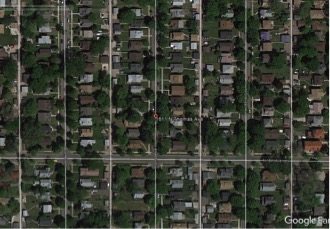
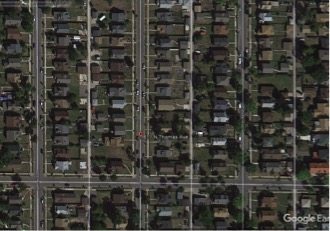
Tree Trust began offering trees to residents impacted by the storm within months. At first, the interest was strong, especially amongst the residents that had minimal property damage but significant tree loss. Over 3,500 properties experienced some type of damage due to the storm. 6,000 trees were lost on public property and an untold amount was lost on private property. As I said, the sky became so big, and I just wanted to find a way to fill it.
Five years later, I feel like we’re able to talk about trees and their importance in our communities with these neighborhoods in a way we couldn’t before. Trees are missed now. The summers are hotter. The noise from the road is louder. Air pollution in this part of the city is being studied more and the results are making people take notice. For the people in these communities affected by the tornado, trees now matter. There have been over 5,000 trees planted in North Minneapolis since the tornado, many of them just starting to cast shade in areas where large trees once stood. It will be a generation before these trees are back to their reigning glory of covering the streets, cooling the homes and purifying the air as those did before the storm.
Tree Trust continues to offer trees to property owners affected by the storm. As each year goes by, we hear the stories: “We need trees”. Some residents want two trees, some want ten. Some know full well that they will never live to see their towering beauty, but they insist on planting because they know that someone planted the trees that graced their streets before the storm and it’s their duty to try to bring them back. It’s about their community.
Once the necessities are tended to—that is the time to connect with the communities more directly at the neighborhood huddles and church groups to talk about trees, while those who can recall the green, leafy streets and the feelings they induced are most able to talk about them and fight for their return. Their experiences of loss should not be understated and those are the stories that create the narrative of a community’s resilience.


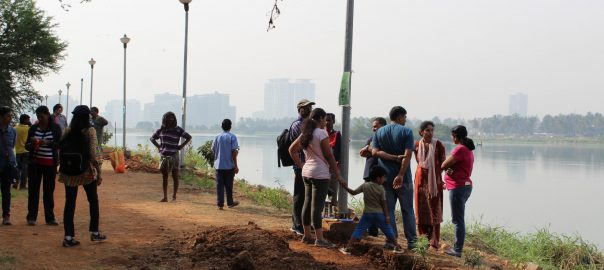
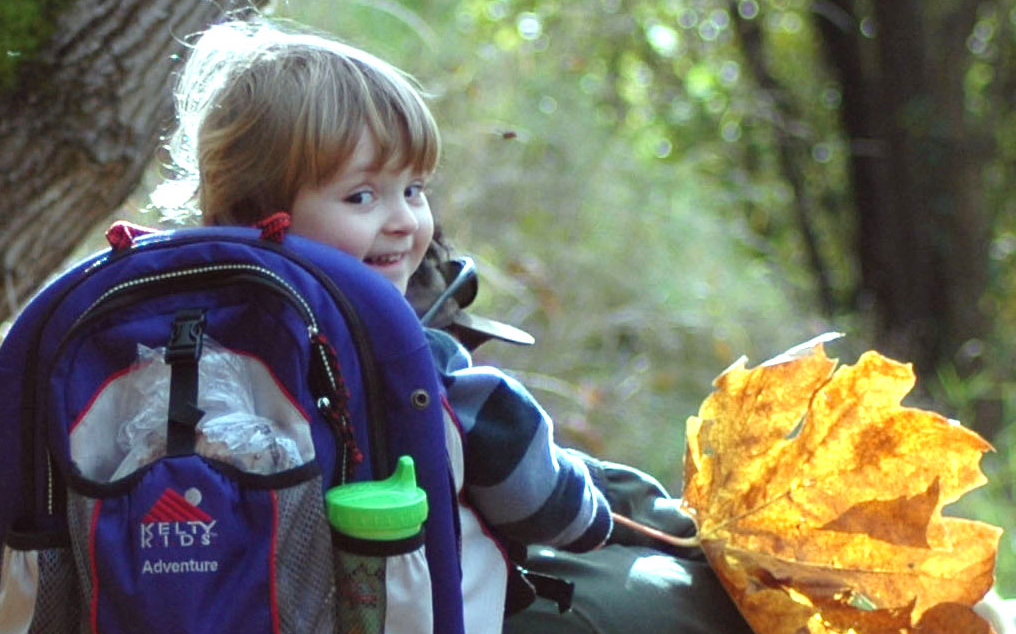
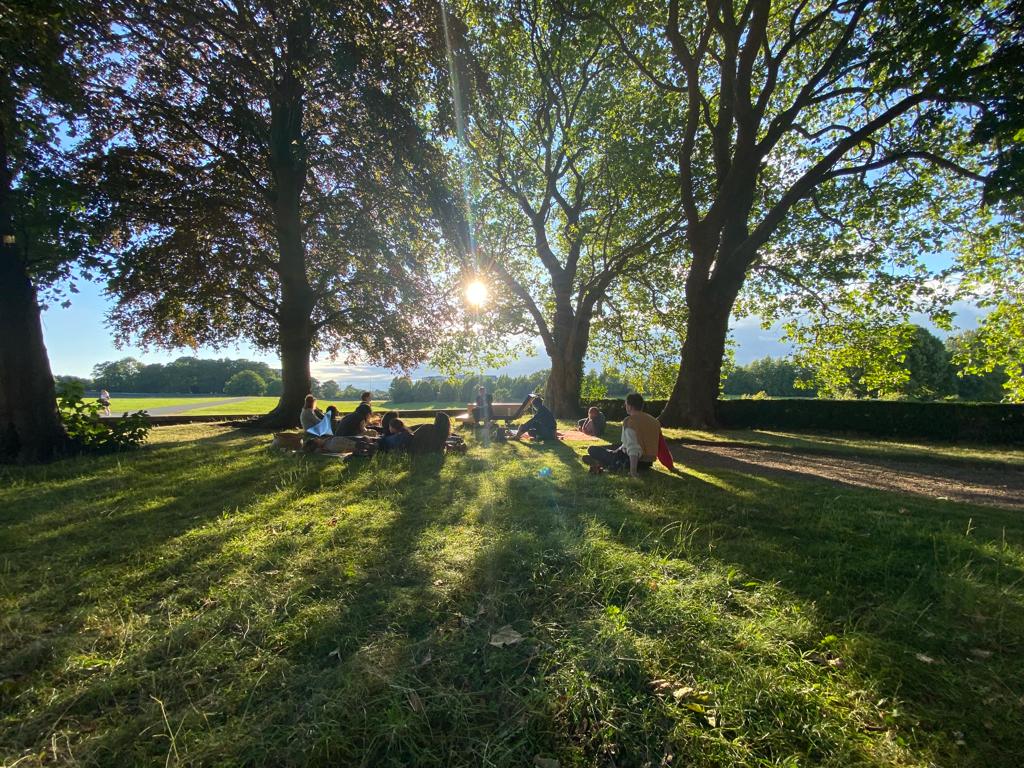

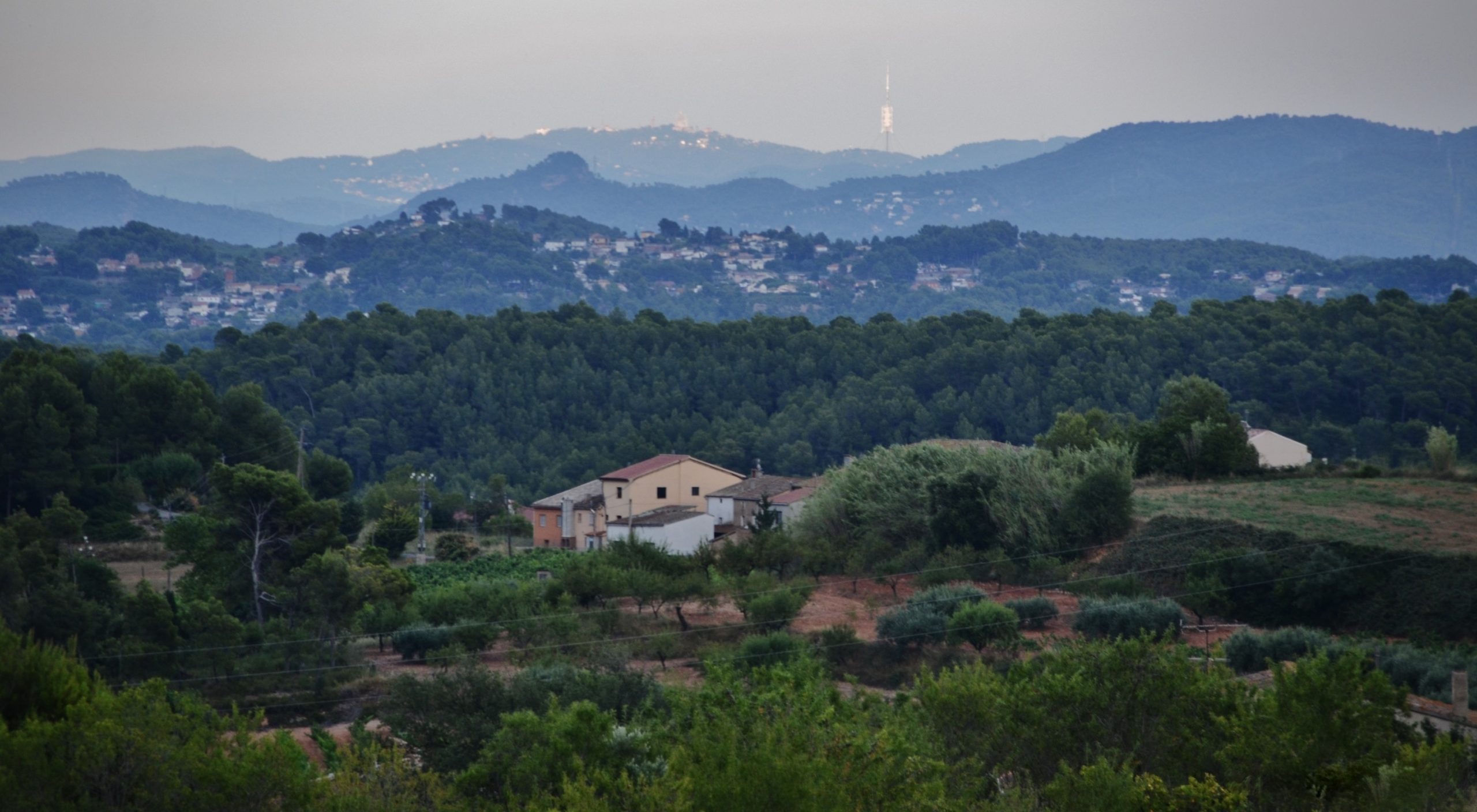
Leave a Reply